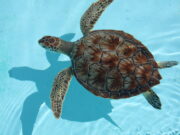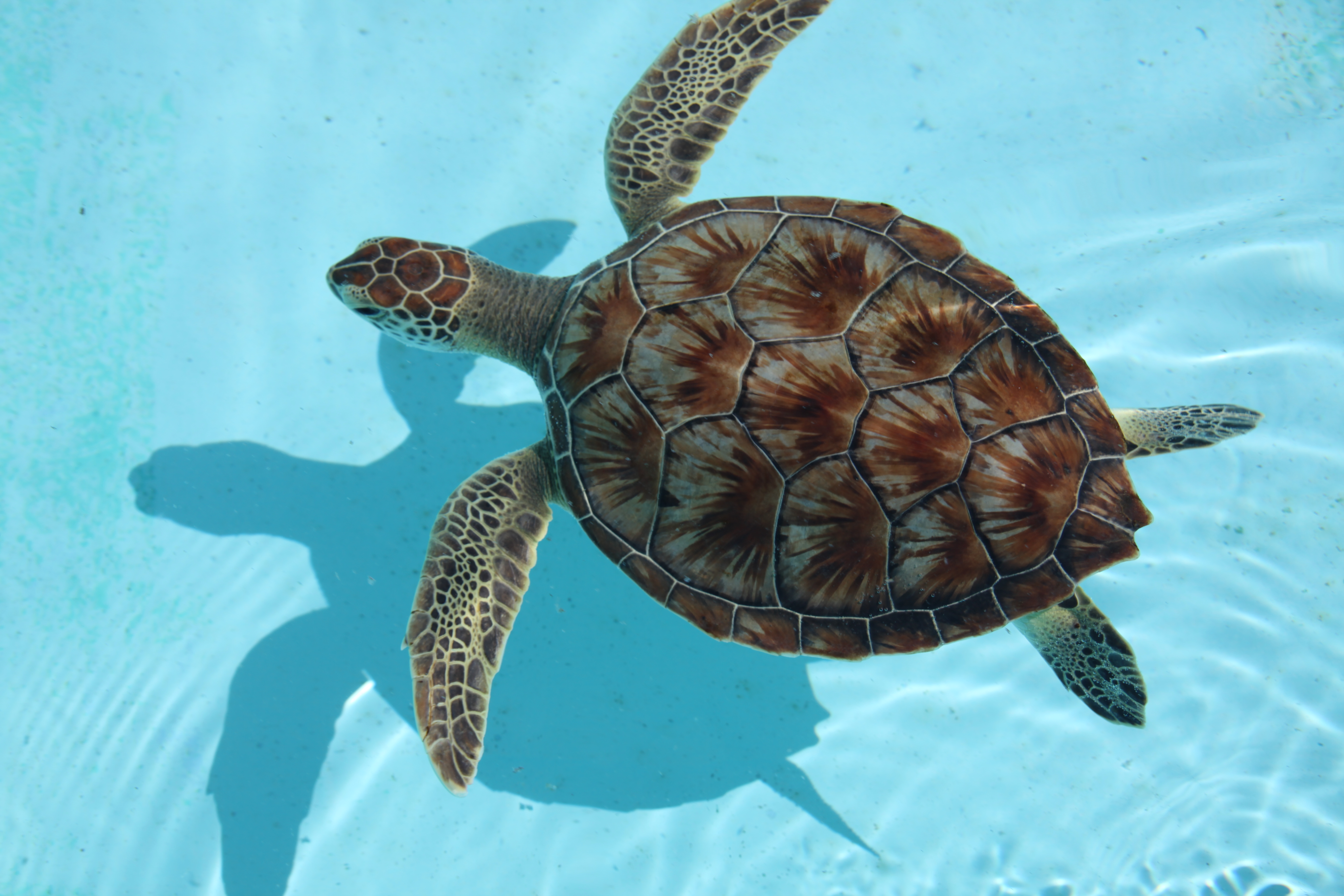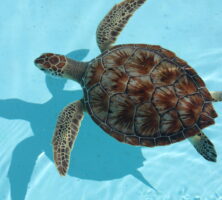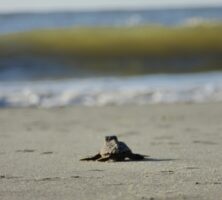Sea turtles are migratory marine reptiles whose ancestors have inhabited earth’s oceans since the late Triassic Period (about 205 million years before present). All species of sea turtles face extinction, mostly due to human causes. Five species can be found in Georgia’s marine waters, with loggerheads being most abundant, and all five species are protected under the federal Endangered Species Act.
By virtue of a temperate climate and protected dunes suitable for nesting activities, Georgia’s barrier island beaches host an average of 1,000 sea turtle nests per year. Georgia’s sea turtle conservation programs are a collaborative effort among private, state, federal, and international projects. The main threats to sea turtles in Georgia are the destruction of their nests and eggs and offshore mortalities associated with commercial longline fishing or shrimping activities. Because they live near the ocean’s surface, sea turtles in one region are affected by threats occurring elsewhere, such as poaching, loss of habitat due to development, and marine pollution.
Georgia’s Sea Turtles
In winter, most sea turtle species dwell in warm tropical waters. During the months of late spring, summer, and early autumn, the species listed below are known either to inhabit or to traverse Georgia’s waters. Since official records were initiated in 1964, all of Georgia’s coastal counties have had reports of nesting and/or strandings of one or more of these species. All hold state and/or federal status as threatened or endangered.
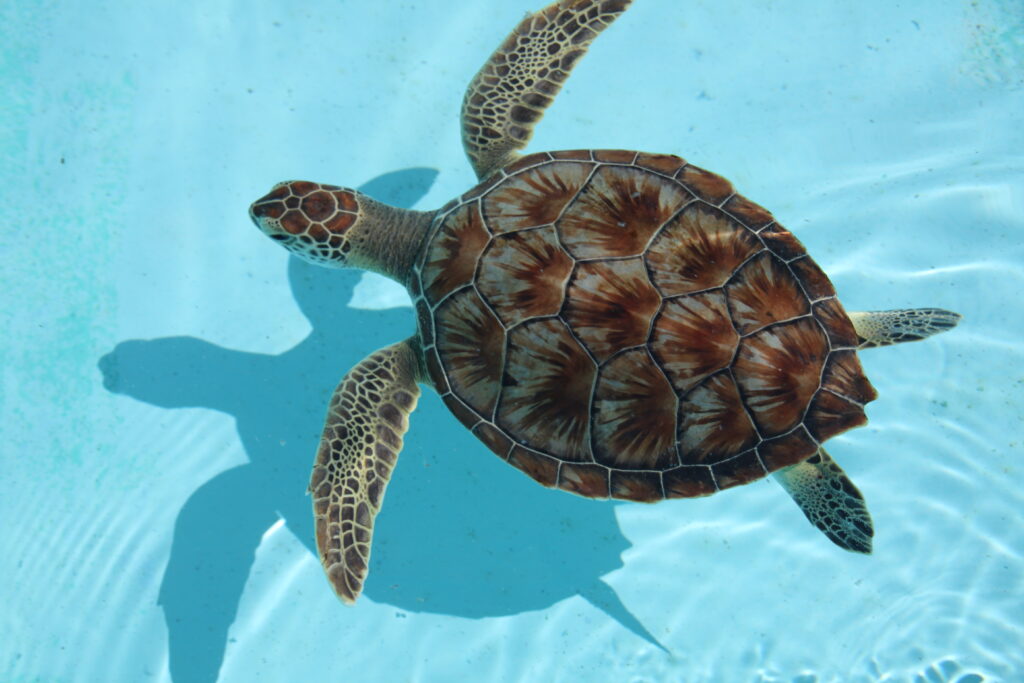
Image from Florida Fish and Wildlife
Loggerhead, Caretta caretta: Georgia’s most common nesting sea turtle; found in the Atlantic, Pacific, and Indian oceans and the Mediterranean Sea.
Leatherback, Dermochelys coriacea: Global distribution, perhaps the most widely distributed reptile on the planet; tolerates colder waters. They are the largest of all sea turtles and can reach nearly six feet in length.
Green, Chelonia mydas: Occasionally found in Georgia waters; found primarily in tropical zones of the Atlantic, Pacific, and Indian oceans.
Kemp’s Ridley, Lepidochelys kempii: Found primarily in the Gulf of Mexico, though juveniles are found in the Atlantic Ocean during warm months.
Hawksbill, Eretmochelys imbricata: Found mostly in tropical waters of the Atlantic, Pacific, and Indian oceans; rarely sighted in Georgia, but two carcasses were found in 1998.
General Life Cycle
Except for their incubation period, male sea turtles spend their entire lives swimming and floating at sea. Females come ashore only to nest. Due to this “invisibility,” many aspects of sea turtle life cycles remain unknown.
Mating usually occurs offshore in shallow waters. A pregnant female will lumber ashore at night to lay her clutch of eggs, depositing them in a cavity dug with her hind feet. Clutch size can range from 80 to more than 100 eggs, and a single pregnant loggerhead female can lay an average of four nests per season. Assuming that no predators consume the eggs, tiny hatchlings struggle out of their sandy nests after fifty to eighty days. They must run a gauntlet of predators, including hungry seagulls and ghost crabs, as well as such dangers as electric lights misdirecting them before they reach the ocean waters. In the North Atlantic populations of most species, those few who survive probably migrate east and spend their first several years being swept along in the North Atlantic gyre, the enormous current that encircles the Sargasso Sea. They likely spend some time floating and feeding in the large Sargasso seaweed mats, which offer food and protection. Some young turtles cross the Atlantic Ocean and return as juveniles to begin their reproductive cycles. Although the Atlantic’s turbid waters make it difficult for scientists to follow these already elusive animals, research indicates that some female sea turtles return to the region or even the specific beach where they hatched to lay their own eggs.
Georgia’s Conservation Efforts
Population and nesting studies in Georgia began at Little Cumberland and Blackbeard islands in 1964 and 1965 respectively, predating the official federal listing in 1973 under the Endangered Species Act. By 1989 all Georgia barrier islands except three had monitoring and protection. The severity of threats against the dramatically dwindling sea turtle populations has galvanized conservation in Georgia. In an effort to standardize data collection and conservation procedures, barrier-island managers along the Georgia coast enacted the Georgia Loggerhead Recovery and Habitat Protection Plan in 1994. In 2007 the Georgia Sea Turtle Center, which provides veterinary care to and public education programs about sea turtles, opened on Jekyll Island.
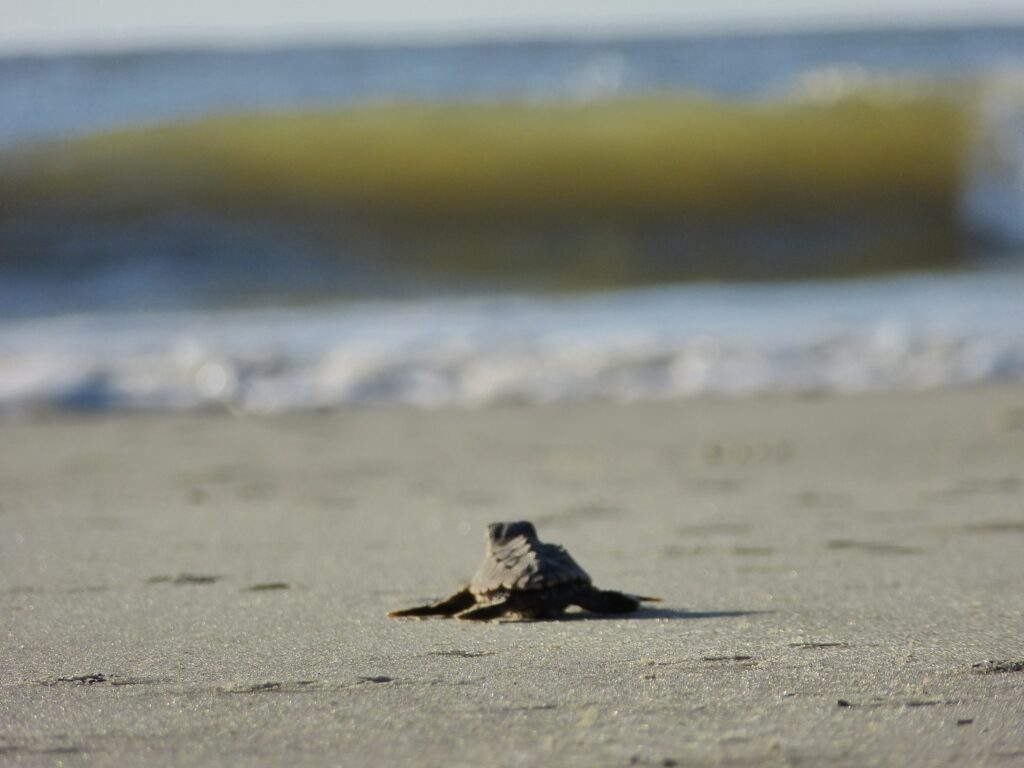
Courtesy of U.S Fish and Wildlife Service
The main threats to Georgia sea turtles are nest predation by hogs, raccoons, and dogs, and drowning as bycatch in longline and shrimping nets. To avoid nest predation, researchers in the past would relocate nests to protected hatchery areas. However, it has been observed that temperature differences due to the position of eggs in the nest can affect hatchling sex ratios. Now nests are left in situ whenever possible, and protective measures are taken in an effort to thwart predation. In the case of offshore mortality, legally mandated Turtle Exclusion Devices are special fixtures that help turtles escape the shrimpers’ nets before they drown but retain most of the shrimp. Longline fishing nets continue to be a mortal threat to sea turtles.
In 2008 the University of Georgia’s Marine Extension Program, the Georgia Sea Turtle Center, and the South Carolina Department of Natural Resources collaborated in a project to increase sea turtle survival, working together to tag turtles for research and collect blood samples for testing. According to these researchers, the population of the sea turtles increased by 3 percent between 2000 and 2008.
If you find a turtle carcass, witness nesting behavior, or observe someone injuring or killing these protected animals, contact the local Department of Natural Resources office. These ancient animals, whose life cycles and ecological functions are still so little known, are fascinating manifestations of our earth’s rich biodiversity.


